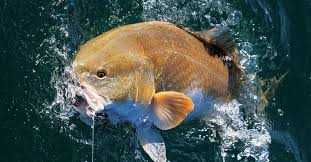Light Tackle

Light tackle fishing is the angler’s way of raising the stakes. Light tackle is what puts the “sport” in sport fishing!
What is Light Tackle Fishing?
There’s no concrete definition of light tackle fishing, mainly because this is a relative term. For instance, the gear you use for light tackle fishing in saltwater could be the same gear you use for heavy tackle fishing in freshwater. Even implementing a spinning reel instead of a bait caster can mean the difference between light and heavy tackle, depending on the circumstances. It all comes down to an intimate knowledge of the gear you’re using and the fish themselves.
The purpose of light tackle fishing is to enhance the fighting power of the fish so that you have to exert more effort in order to hook, play, and land your catch. Anglers use light tackle when they want to give themselves more of a challenge. Simply put, it’s more fun that way! When you want to test your skills to the fullest, you can fish using “ultra-light” tackle.
Fishing with light tackle also has practical advantages. In clear water, a fine-diameter line and lighter lures improve your chances of hooking fish which are easily spooked or less-often fooled by anglers. When using light line, your casts can go farther and you will detect a bite more easily. Depending on the target species, light tackle can be used for spinning, casting, jigging, popping, bottom fishing, and much more.
Light Tackle Fishing Gear
Light tackle fishing rods are usually flexible, in order to accommodate the lightness of the line. Anglers typically use a 7-9’ rod, while some opt in for 10-14-footers. Long rods give you more leverage against big fish and put less strain on your arms and wrists. A longer rod also allows you to maneuver around obstacles once a fish is hooked.
Demanding conditions and big fish can put a lot of strain on light line, so it’s important to keep it in good condition and replace it frequently. You can help to prevent line abrasion by using a double length of line or a heavier leader.
Light Tackle Fishing Tips
Know your gear and match it well
It’s important to use hooks and leaders which complement the strength of your line. Try to use relatively small, light wire hooks and leaders just strong enough to contend with the fish you’re targeting. Keep your hooks sharp, since this will make it easier to hook your catch when using light tackle. Finally, take great care to tie quality knots so you can preserve the integrity of the line.
Land your catch quickly
If you intend to release your catch, it’s important to land it as quickly as possible so that the fish can recover. This can be more of a challenge on light tackle, especially since the whole point is to make the fight more intense to begin with! This means it’s important to ‘play’ your catch properly. Work the fish constantly, by reeling, pumping, and keeping pressure on it throughout the fight. Let your drag do the work as a fish swims away, but focus on gaining line every chance you get.
Prepare to lose a lot of fish
Light line is more easily frayed and broken, which increases your chances of losing hooks, lures, and of course the fish on the other end. So long as you can enjoy the fight and admire the fish that got away for his tenacity, there’s no reason to let this get you down!
Light isn’t always right
Bear in mind that light tackle fishing isn’t appropriate for all situations. Battling Largemouth Bass or Steelhead on light tackle in the wrong conditions is likely to end with these fish swimming away, hooks in their mouths and streams of nylon trailing behind them. There’s a small margin of error when light tackle fishing, due to the effect it can have on both the fish and your equipment. It’s best to develop your expertise by fishing with a guide or experienced friend until you get the hang of it.
Iconic Light Tackle Target Species
Bass - There’s no fish better suited to a light tackle battle than a Bass! Top Bass fishing lakes include Sam Rayburn Reservoir (TX), Clear Lake (CA), Lake St. Clair (MI), etc.
Bonefish - This easily-spooked fish is so elusive than anglers have nicknamed it the “gray ghost” of the flats. Naturally, this species calls for light tackle and a great deal of skill. Top destinations for Bone fishing include the Florida Keys, Nassau, the Cayman Island, etc.
Bluefin Tuna - Bluefin’s weigh well above 500 lbs. on average, with the largest of them known to exceed 1,000 lbs. catching these brutes on heavy tackle is already challenging, but some anglers in Cape Cod, MA go the extra mile by relying on light tackle instead.
All it takes is the right amount of knowledge and experience to enjoy light tackle fishing anywhere in the world